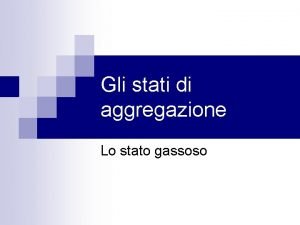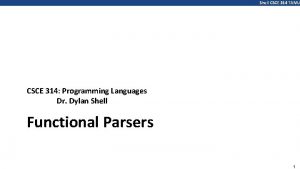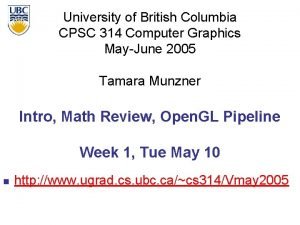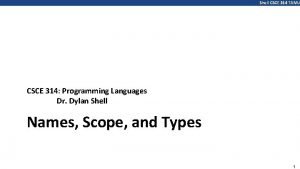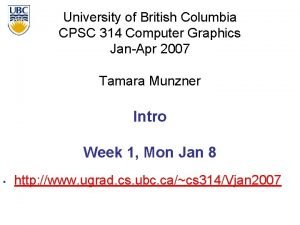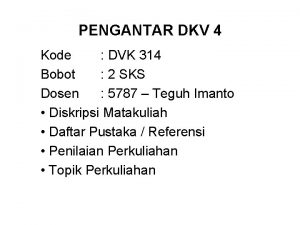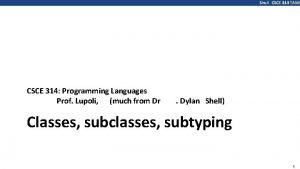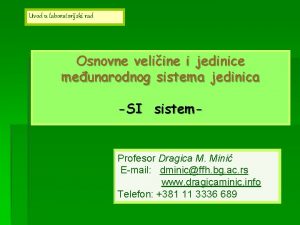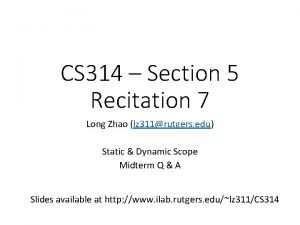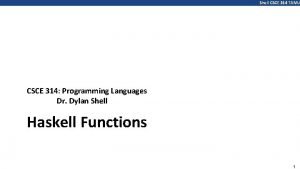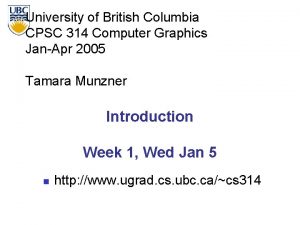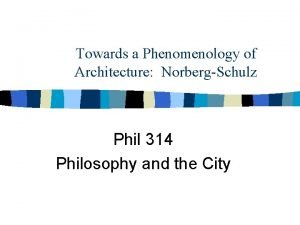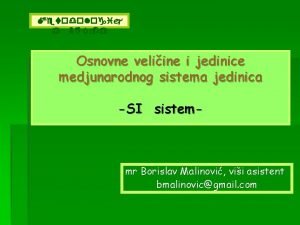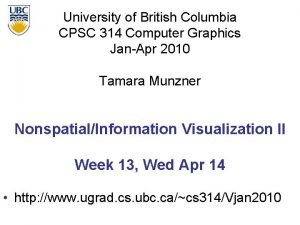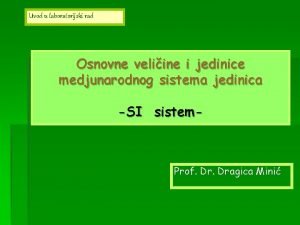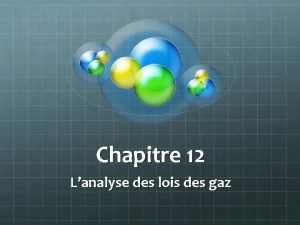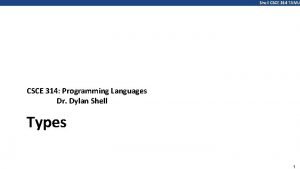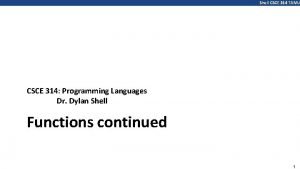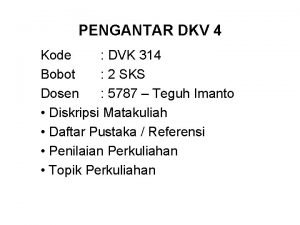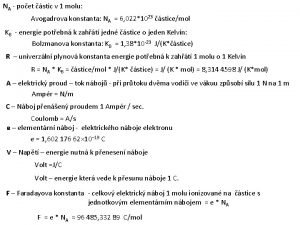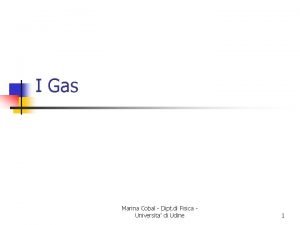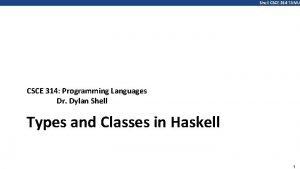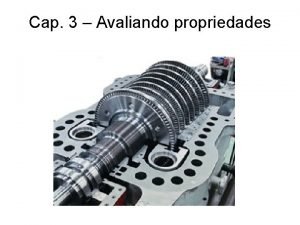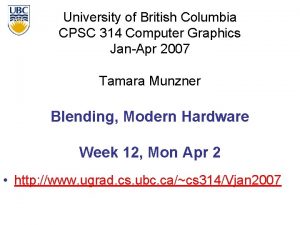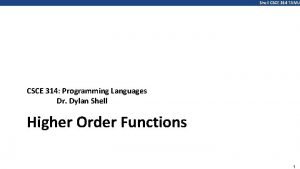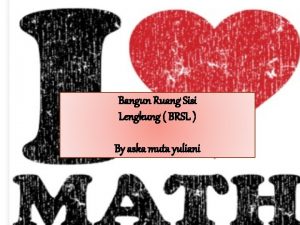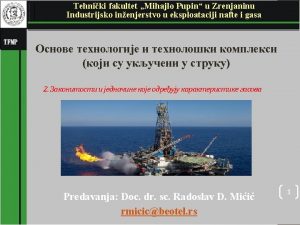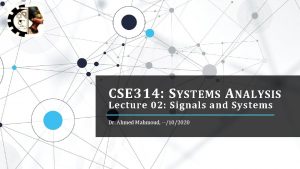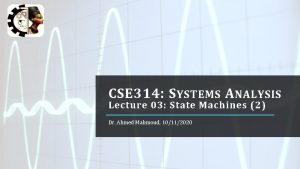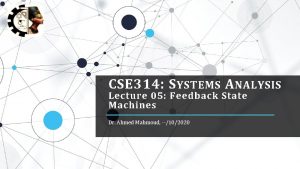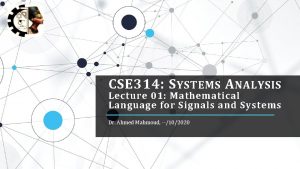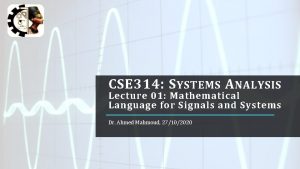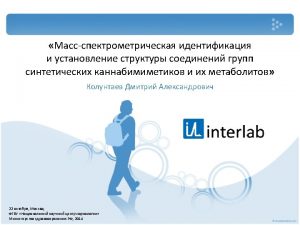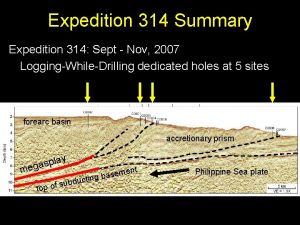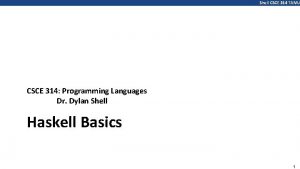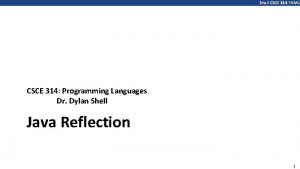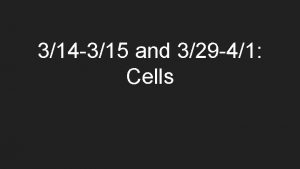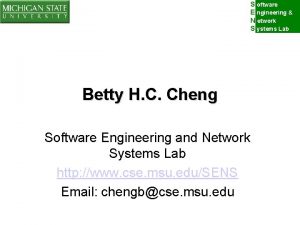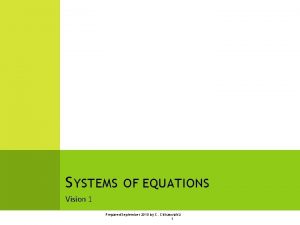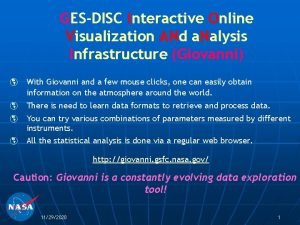CSE 314 S YSTEMS A NALYSIS Lecture 06






























- Slides: 30

CSE 314: S YSTEMS A NALYSIS Lecture 06: Filtering Dr. Ahmed Mahmoud, 29/11/2020

What Is Filtering? • LTI systems can alter scales or phases of sinusoidal components of input signals. • LTI systems cannot add new frequency components. • LTI systems can filter out frequency components of the input, and also enhance other components, but it cannot introduce components that are not already present in the input. • It merely changes the relative amplitudes and phases of the frequency components that are present in the inputs. • LTI can be either a model of a physical system or an ideal (Behavior specification) of an engineered system. 29/11/2020 CSE 314: Systems Analysis, Lec 06 2

Filtering Examples: Acoustics 29/11/2020 CSE 314: Systems Analysis, Lec 06 3

Filtering Examples: Communications • A channel may be a physical medium, such as a pair of wires, that carries an electrical signal. • That physical medium distorts the signal. • This distortion is often reasonably well approximated as linear and time invariant. • An equalizer in the receiver compensates for this distortion. • It should consider both magnitude and phase. Why? 29/11/2020 CSE 314: Systems Analysis, Lec 06 4

Filtering Examples: Image Processing • The top image is the original, undistorted image. The lower left image is blurred, as might result for example from unfocused optics. • Image processing systems are LSI systems. • The blurred image is constructed from the original by an LSI system that eliminates high (spatial) frequencies, passing unaltered the low frequencies. Low pass. • The lower right image is constructed from the original by an LSI system that eliminates low frequencies, passing unaltered the high frequencies. High pass. 29/11/2020 CSE 314: Systems Analysis, Lec 06 5

Imperative Description of Frequency Response • The frequency response of a system is a declarative description of the system. • It tells us what it is, not how it works. • For example, it tells us that it is a lowpass filter, but it does not tell us whether it is a defocused lens or a computer program, much less telling us how the computer program works. • In this lecture, we explore imperative descriptions of systems, and build up to detailed descriptions of software that can implement certain kinds of LTI (or LSI) systems. • These imperative descriptions are based on convolution. 29/11/2020 CSE 314: Systems Analysis, Lec 06 6

Convolution Sum 29/11/2020 CSE 314: Systems Analysis, Lec 06 7

Example: Convolution Sum 29/11/2020 CSE 314: Systems Analysis, Lec 06 8

Convolution Integral 29/11/2020 CSE 314: Systems Analysis, Lec 06 9

Example: Convolution Integral 29/11/2020 CSE 314: Systems Analysis, Lec 06 10

Impulses • An impulse is a signal that is zero everywhere except at time zero. Discrete-time case Continuous-time case • The Kronecker delta function defined by: is • The Dirac delta function is defined as where and to satisfy the following property: for any 29/11/2020 CSE 314: Systems Analysis, Lec 06 11

Signals as Sums of Weighted Delta Functions 29/11/2020 CSE 314: Systems Analysis, Lec 06 12

Impulse Response and Convolution (1) 29/11/2020 CSE 314: Systems Analysis, Lec 06 13

Impulse Response and Convolution (2) 29/11/2020 CSE 314: Systems Analysis, Lec 06 14

Frequency Response and Impulse Response (1) 29/11/2020 CSE 314: Systems Analysis, Lec 06 15

Frequency Response and Impulse Response (2) 29/11/2020 CSE 314: Systems Analysis, Lec 06 16

Causality 29/11/2020 CSE 314: Systems Analysis, Lec 06 17

Finite Impulse Response (FIR) Filters 29/11/2020 CSE 314: Systems Analysis, Lec 06 18

Finite Impulse Response (FIR) Filters 29/11/2020 CSE 314: Systems Analysis, Lec 06 19

Example: FIR Filter … (1) 29/11/2020 CSE 314: Systems Analysis, Lec 06 20

Example: FIR Filter … (2) 29/11/2020 CSE 314: Systems Analysis, Lec 06 21

Infinite Impulse Response (IIR) Filters 29/11/2020 CSE 314: Systems Analysis, Lec 06 22

Example: IIR Filter … (1) • Consider an LTI filter defined by the following difference equation: • The impulse response: 29/11/2020 CSE 314: Systems Analysis, Lec 06 23

Example: IIR Filter … (2) 29/11/2020 CSE 314: Systems Analysis, Lec 06 24

Filters Implementation • An LTI system (a filter) can be described by a state-space, a frequency response, an impulse response, or a difference equation. • The state-space description and the difference equations prove the most useful when constructing the filter. • A realization of a filter in hardware or software is called an implementation. • Filter design refer to the choice of frequency response, impulse response, or coefficients for a difference equation. 29/11/2020 CSE 314: Systems Analysis, Lec 06 25

Signal Flow Graphs 29/11/2020 CSE 314: Systems Analysis, Lec 06 26

IIR Direct Form 1 29/11/2020 CSE 314: Systems Analysis, Lec 06 27

IIR Direct Form 1 29/11/2020 CSE 314: Systems Analysis, Lec 06 28

IIR Direct Form 2 29/11/2020 CSE 314: Systems Analysis, Lec 06 29

Reading • Read carefully Chapter 9: Filtering. 29/11/2020 CSE 314: Systems Analysis, Lec 06 30
 01:640:244 lecture notes - lecture 15: plat, idah, farad
01:640:244 lecture notes - lecture 15: plat, idah, farad Logical server
Logical server Volume molare
Volume molare Csce 314
Csce 314 Mis 314
Mis 314 Munzner cheating list
Munzner cheating list Csce 314
Csce 314 Cpsc 314
Cpsc 314 Arti kode 314
Arti kode 314 Tamu csce 314
Tamu csce 314 8 314 konstanta
8 314 konstanta Rutgers cs 314
Rutgers cs 314 Csce 314 tamu
Csce 314 tamu Cpsc 426
Cpsc 426 Phil 314
Phil 314 Si sistem
Si sistem Cpsc 314
Cpsc 314 Hukum gay lussac
Hukum gay lussac 8 314 konstanta
8 314 konstanta Tpn et tapn
Tpn et tapn Tamu csce 314
Tamu csce 314 Dylan shell tamu
Dylan shell tamu Arti kode 314
Arti kode 314 Avogadrova konstanta
Avogadrova konstanta Fisica
Fisica Csce 314
Csce 314 8 314 constante
8 314 constante Cpsc 314
Cpsc 314 Csce 314
Csce 314 Brsl
Brsl Amagatov zakon
Amagatov zakon


